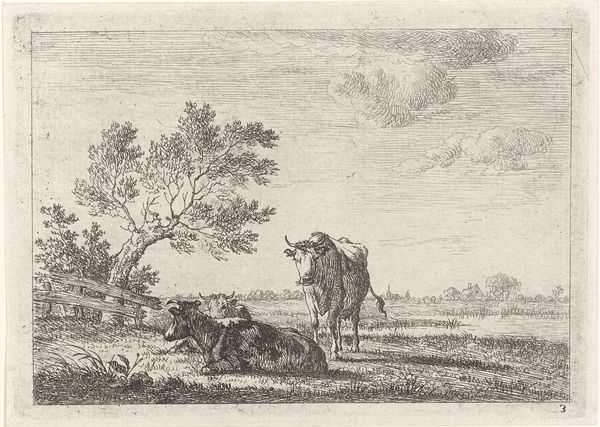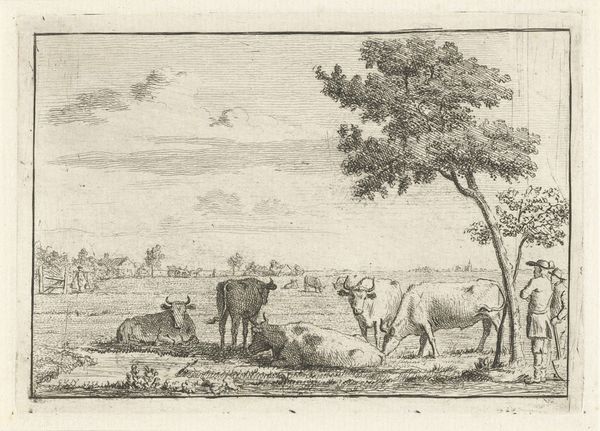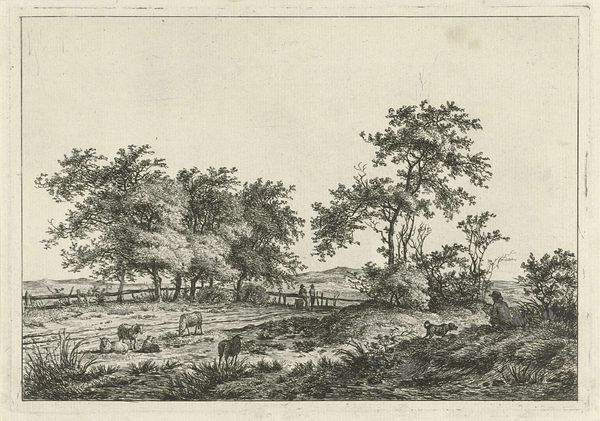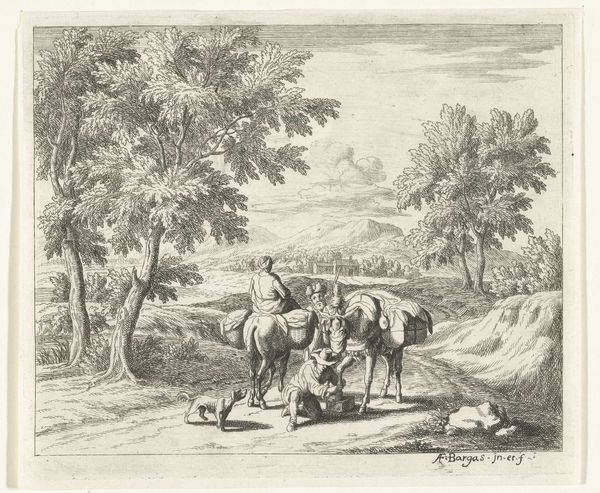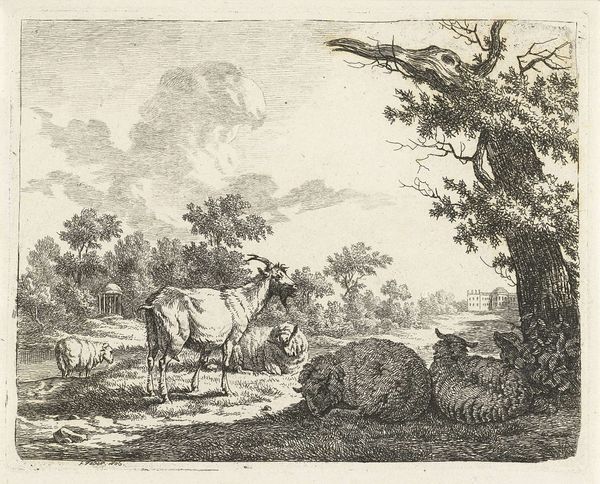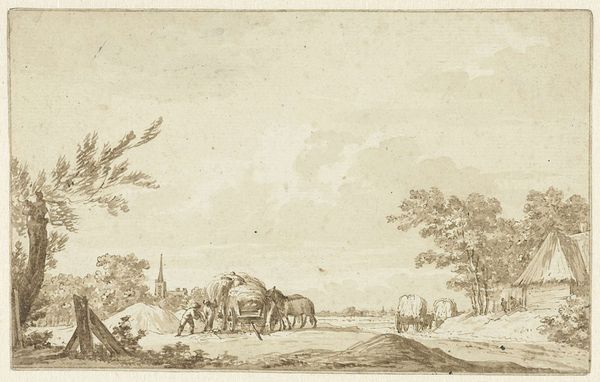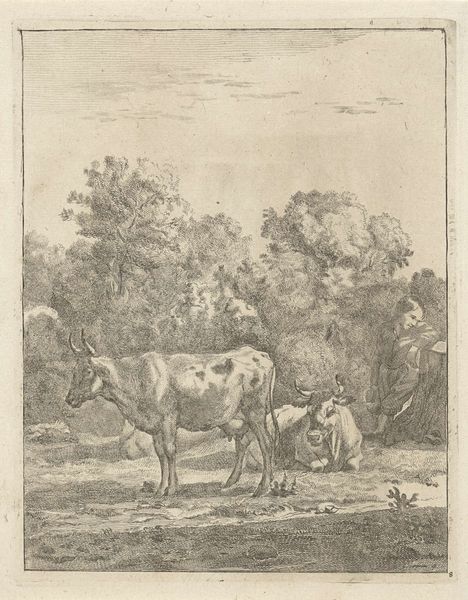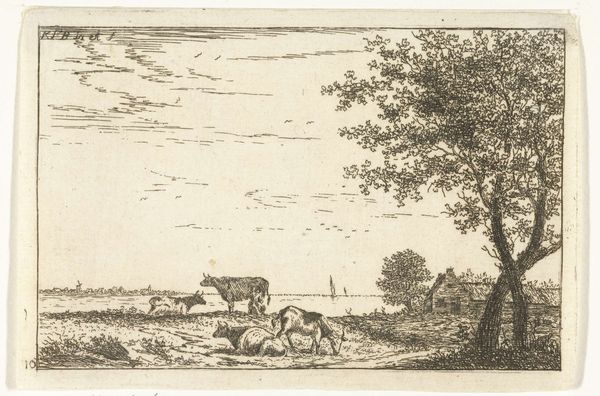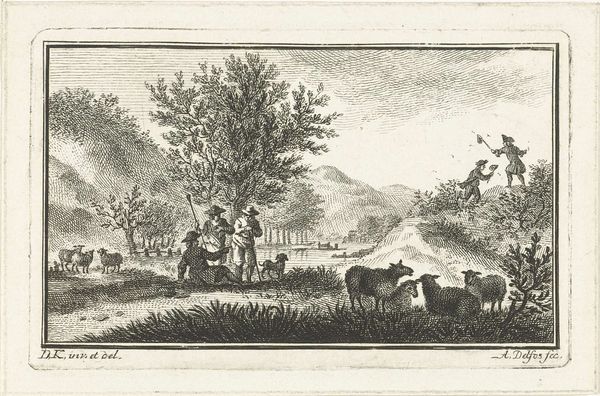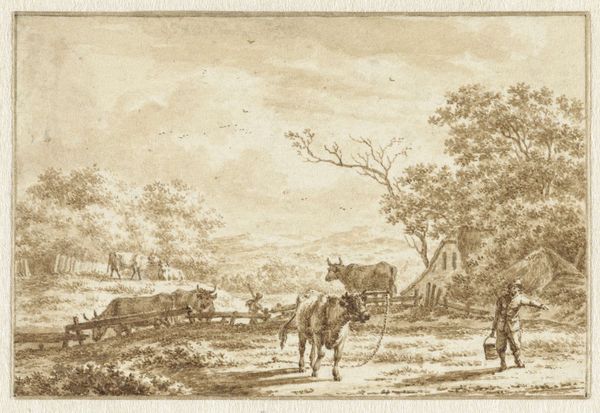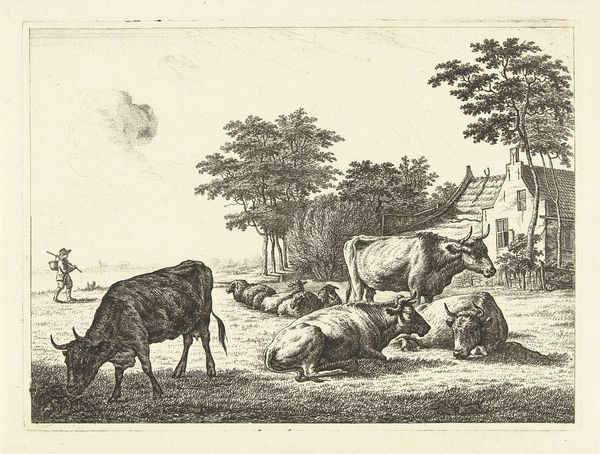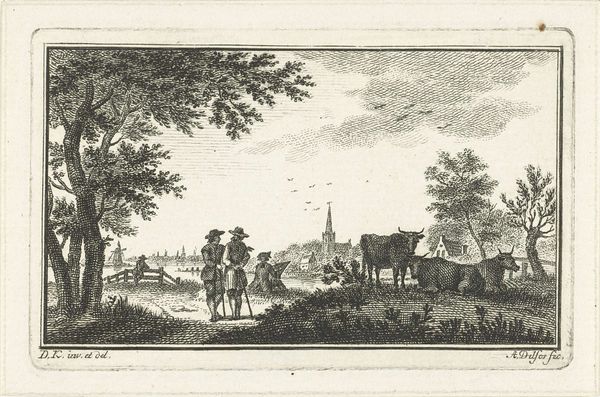
print, etching
#
animal
#
dutch-golden-age
# print
#
etching
#
landscape
#
realism
Dimensions: height 103 mm, width 144 mm
Copyright: Rijks Museum: Open Domain
Curator: What a placid scene. Here we have "Three Cows in a Meadow," an etching by Johannes Janson, likely created between 1761 and 1784. It’s currently held at the Rijksmuseum. Editor: My first impression is one of quiet contentment. There's something very grounded and calming about the composition. The soft textures and tones create a scene of peaceful simplicity. Curator: That sense of simplicity speaks volumes about the Dutch Golden Age. Images of livestock become more common in prints, often linked to notions of national prosperity. Think about how the political climate and social values shaped these landscapes. Editor: Yes, the cow as a symbol of bounty and rural life makes perfect sense in that context. I'm curious about the choice of the etching medium itself. Does the detailed linework emphasize certain societal values? Curator: Definitely. Etching allowed for relatively inexpensive reproduction. Prints circulated widely, solidifying certain images and narratives about the land. And of course it emphasizes that connection between nationhood, prosperity, and depictions of the landscape. Editor: Looking closer, even the placement of the cows feels symbolic. One grazes freely, one rests, and another stands alert, each possibly reflecting different facets of Dutch society at that time. What do you make of the attention the artist has put to clouds, their rounded shape is often connected with benevolence. Curator: Absolutely. And that subtle but intentional layering of symbols resonates with the values of a nation keenly aware of its agricultural wealth. Landscape prints gained in popularity during this time, so art was becoming less affiliated with a solely wealthy aristocracy, and expanding to appeal to the broader bourgeois culture. Editor: I like that— a window into Dutch society at that time. Considering the scale of everything—it is the sort of print that would probably be held intimately and studied from close quarters—perhaps revealing its depth more on the second or third viewing. Curator: It offers us a small glimpse into a much bigger world, a way of imagining and solidifying ideas about a nation through its art. Editor: An artistic statement, silently yet powerfully advocating for the intrinsic worth of simple Dutch landscapes. It has so many interesting aspects and has much to reveal.
Comments
No comments
Be the first to comment and join the conversation on the ultimate creative platform.
